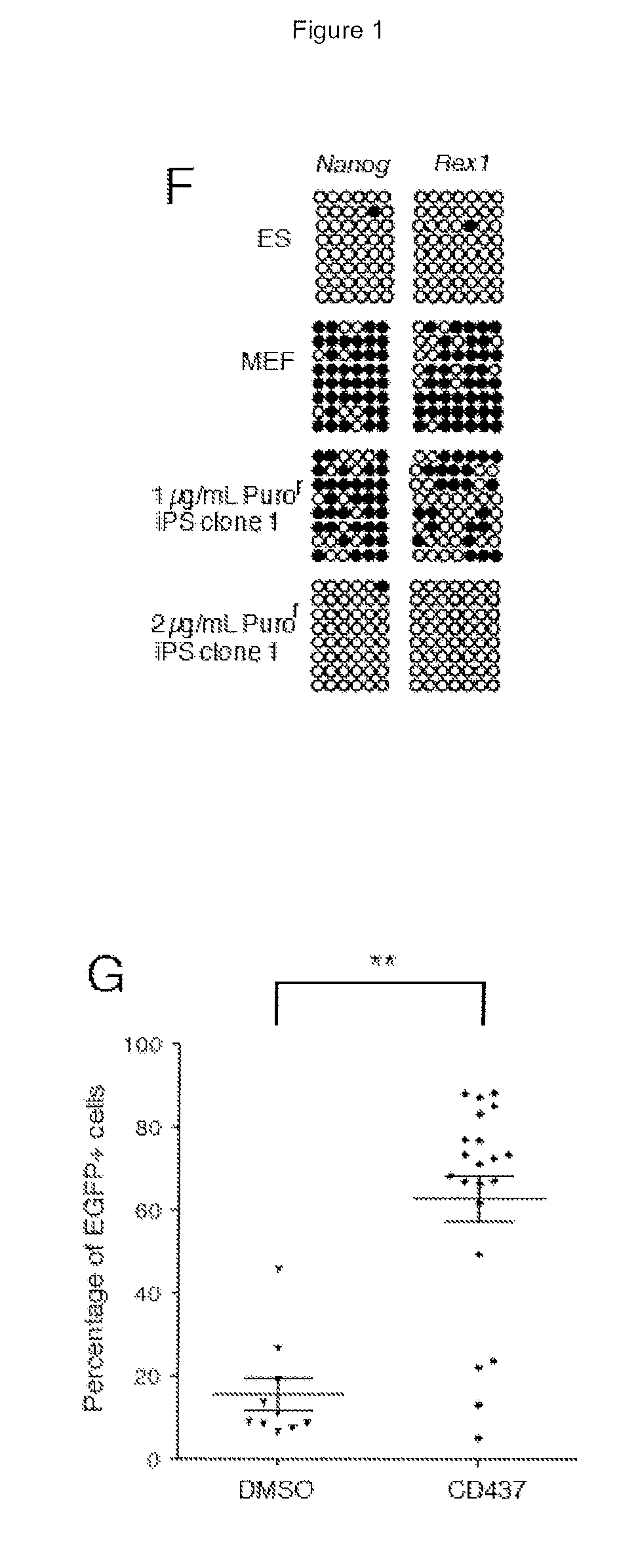Cells and methods for obtaining them
- Summary
- Abstract
- Description
- Claims
- Application Information
AI Technical Summary
Benefits of technology
Problems solved by technology
Method used
Image
Examples
example 1
[0204]Expressing retinoic acid receptor gamma (RARG) and liver receptor homolog 1 (LRH-1) together with four Yamanaka factors reprograms mouse and human somatic cells to ground state iPSCs.
Abstract
[0205]Stem cells have the capacity for self-renewal and the potential to differentiate into different cell types. Somatic cells can be reprogrammed to Induced Pluripotent Stem Cells (iPSCs) by expressing four transcription factors but the mechanism is still not clear. Here we report that modulating retinoic acid (RA) signalling profoundly promoted reprogramming. Furthermore, co-expressing Rarg (retinoic acid receptor gamma) and Lrh-1 (liver receptor homolog 1) with the four factors led to rapid reprogramming of mouse embryonic fibroblast cells (MEFs) to ground state or naïve iPSCs directly in chemically defined 2i media. The critical functions of RA signalling and RARG and LRH-1 in reprogramming are evolutionally conserved as this combination of factors reprogrammed human fibroblast cells ...
example 2
[0249]Here we report that expressing two new key transcription factors, Rarg and Lrh1, together with four Yamanaka factors, rapidly activates the endogenous Oct4 locus in as few as 3 days and allowed very fast and efficient reprogramming of mouse embryonic fibroblast cells (MEF). The iPS clones produced were of high quality based on morphology and molecular analysis, and were able to differentiate to various cell types in vivo including the germline. When the same strategy was applied to reprogram human neonatal foreskin dermal fibroblast cells (HDFn), we readily obtained human iPS cells that were LIF-dependent, but FGF-independent. Moreover, the human iPS cells proliferated well and could be subcloned at single cell density in regular mouse ES cell culture condition and expanded extensively without any discernible chromosomal abnormality. Our new iPS cell platform thus provides a novel and highly efficient approach to achieve full pluripotency in two mammalian species. The human iP...
PUM
| Property | Measurement | Unit |
|---|---|---|
| Temperature | aaaaa | aaaaa |
| Volume | aaaaa | aaaaa |
| Electric charge | aaaaa | aaaaa |
Abstract
Description
Claims
Application Information
 Login to View More
Login to View More - R&D
- Intellectual Property
- Life Sciences
- Materials
- Tech Scout
- Unparalleled Data Quality
- Higher Quality Content
- 60% Fewer Hallucinations
Browse by: Latest US Patents, China's latest patents, Technical Efficacy Thesaurus, Application Domain, Technology Topic, Popular Technical Reports.
© 2025 PatSnap. All rights reserved.Legal|Privacy policy|Modern Slavery Act Transparency Statement|Sitemap|About US| Contact US: help@patsnap.com



